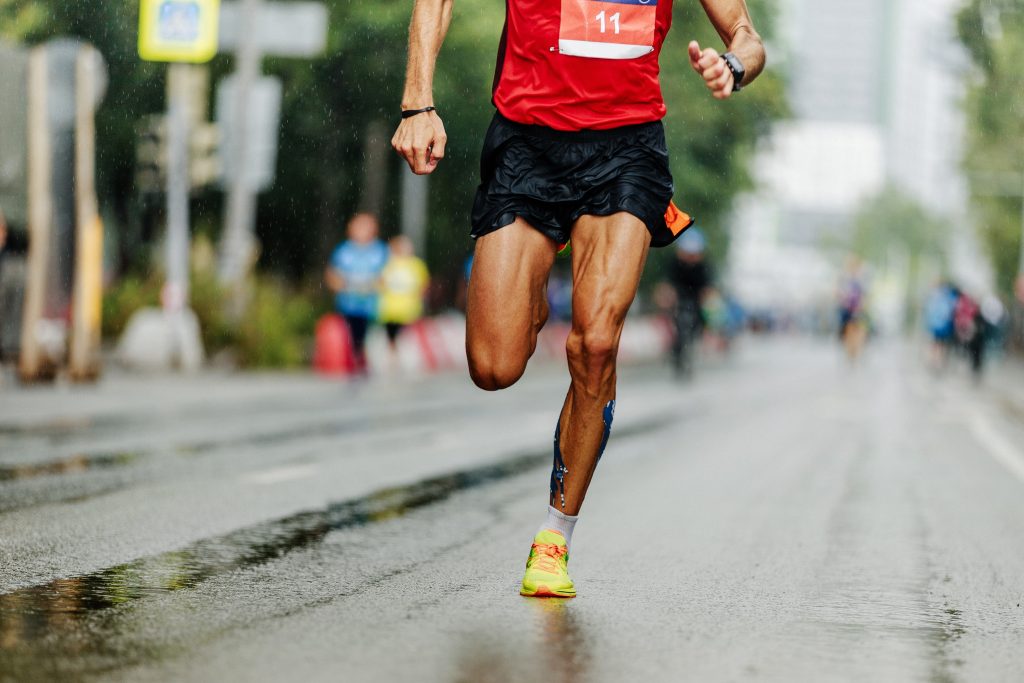How to reduce your risk of injury in marathon running and training
With a professional athlete and a Consultant in Musculoskeletal, Sports and Exercise Medicine

How to reduce your risk of injury in marathon running and training
Posted on Wed Jul 29, 2020
‘Recreational and competitive runners reveal an incidence of injury during or after a marathon ranging between 16 and 92.4%’. Even at the lower end of the scale – 16% – that’s a pretty high risk of injury!
Think about it – of the 43,000 people who ran the London Marathon in 2019, that’s 6,880 people who have injured themselves during or after the marathon, or even an eye-watering 39,732 injuries at the top end of the scale!
Can this be true?
This does seem a little extreme, so let’s look at the cold, hard facts.
According to Peak Endurance Sport, who have analysed data from all London Marathons since 1981, 1 in 6 runners will come into contact with St John’s Ambulance crews during or directly after the race. This includes things like having blisters treated and other constitutional qualms, but a salient figure here is that 79% of these contacts were musculoskeletal complaints.
If we extrapolate that data, we get roughly a 13% rate of runners during the marathon with MSK concerns. Now if we add the likelihood of realising an injury after the marathon (which is tough to gather meaningful data on), we start to get into quite high numbers of injuries.
Anyway, the point here is that – fantastic endeavour though marathon is – it does entail a fair amount of risk. To find out how runners can mitigate this risk, we spoke to Consultant in Sport, Exercise & Musculoskeletal Medicine, Dr Anthony Waring and professional long-distance runner Tamara Armoush.
Dr Waring, what is the first thing you’d say to an athlete if they told you they were starting marathon training?
‘There are a few questions to ask here,’ says Dr Waring:
- “Have you done a marathon before?”
- “What time are you looking for?”
- “Are you using a training program?”
- “Have you had any lower limb injuries or problems in the past?”
- “How long is it until the marathon?”’
These questions help clinicians like Dr Waring to estimate the risk of injury, and also help to tailor any advice and bespoke exercises they may prescribe.
If you’re a practitioner looking to learn more about working with marathon runners, or if you’re a runner yourself, you might be interested in Dr Waring’s CPD course on this topic.
Tamara, what steps do you take to avoid injury in your everyday training?
‘The most important thing for me to avoid injury is doing my prehab and strength & conditioning exercises,’ says Tamara.
Tamara, as a professional, has her own tailored strength and conditioning programme, but for a good example of a 16-week programme you can find one on Runner’s World.
Since MSK issues are the most common injury experienced by runners, Tamara is also very careful to treat her body well before, during and after training.
‘After a particularly intense training session I will always have an ice bath,’ says Tamara. Ice baths work by reducing swelling and tissue breakdown – have a look in more detail here.
‘The day after a session I might have a hot bath or go in the sauna; I think that’s a good way of relieving tight muscles,’ continues Tamara. This is to relax muscles – find out more here.
Another thing that Tamara does is to ‘keep on top of stretching; foam rolling, regular massage etc. and putting magnesium spray on my legs before I get to bed or having a bath with magnesium salts.’ Magnesium spray is thought to speed up recovery time, (although even if this is purely a placebo effect, it’s still worth it!).
Essentially, Tamara’s routine involves doing absolutely everything she can to keep her muscles and heart healthy.
Dr Waring, what marathon injury do you see the most, and is it avoidable?
‘The knee is probably the most common area that runners training for the marathon present with and there are a few common causes here:
‘Pain at the outside of the knee would make me think of iliotibial band friction syndrome.
‘Pain at the front of the knee would make me think of either patellar tendinopathy or pain coming from underneath the kneecap.
‘A good history and examination as well as the use of imaging, if appropriate, will help clarify a diagnosis and aid in putting in place a good management plan.
‘The majority of injuries are avoidable. If problems do arise, the sooner we can assess pain, movement patterns, strength and running mechanics, the sooner we can establish a diagnosis and help in recovery.’
TL;DR
The majority of marathon injuries are musculoskeletal and are often avoidable when best practices are adhered to in training.
About the contributors
Dr Anthony Waring practices at Pure Sports Med.
Tamara Armoush is a British-born athlete who competes for Jordan.
Oryon
Here at Oryon, we can introduce you to a trusted healthcare practitioner who can see you for a virtual consultation or a physical trauma consultation. We can also offer you an MRI, Ultrasound or X-ray at our clinic in Central London. Lastly, check out our healthcare courses and events, which are now all being delivered via professional webinars.
Share this article
Most Recent
The Most Common Tennis Injuries
Posted on Mon Jul 14, 2025
Do I Need A Referral For An MRI Scan?
Posted on Mon Jul 14, 2025
Posted on Mon Jul 14, 2025
Stay up to date
If you’re interested in keeping up with what we’re doing, just leave your email address here and we’ll send you periodic newsletters and other updates.








